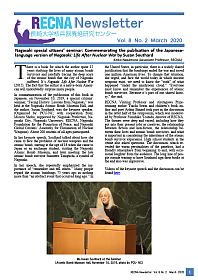RECNA Newsletter Vol.8 No.2 (March 31, 2020)
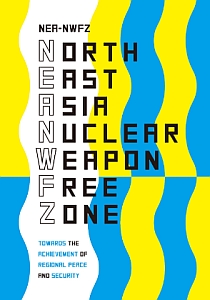 A concise guide to “Northeast Asia Nuclear Weapon Free Zone (NEA-NWFZ) and the Comprehensive Approach,” which has been proposed by the Research Center for Nuclear Weapons Abolition, Nagasaki University (RECNA) as a path to achieve a more peaceful and secure Northeast Asia without nuclear weapons.
A concise guide to “Northeast Asia Nuclear Weapon Free Zone (NEA-NWFZ) and the Comprehensive Approach,” which has been proposed by the Research Center for Nuclear Weapons Abolition, Nagasaki University (RECNA) as a path to achieve a more peaceful and secure Northeast Asia without nuclear weapons.
You can access the eBook version of the guide 2020 from here.
There are also PDF versions for browsing and printing.
“The World’s Nuclear Warheads Count” is an easily understood illustration of the current state of the world we live in, showing nearly 13,880 nuclear warheads in the world by country and by type. The detailed data of this poster, “Global list of nuclear warheads” (as of June 2019), has been published on our website. Please see it from here.
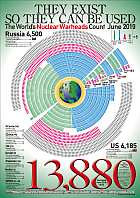
The World’s Nuclear Warheads Count
PSNA Working Paper 12 “The 2018-2019 Summitry Process and Prospects for Denuclearization of the korean Peninsula” written by Anton Khlopkov was published.
For details, please see the following webpage:
PSNA Working Paper 11 “China’s Dilemmas over Stalled North Korean Denuclearization Talks” written by Tong ZHAO was published.
For details, please see the following webpage:
PSNA Working Paper 10 “The Overview of the Adaptive Cooperative Threat Reduction Proposal for the Denuclearization of the DPRK – Non-Governmental Perspectives –” published.
For details, please see the following webpage.
PSNA Working Paper 9 “Paved with Good Intentions : Trump’s Nuclear Diplomacy with North Korea” published.
For details, please see the following webpage.
During the maintenance process, our website will be temporarily unavailable during the following hours. We apologize for any inconvenience. Thank you for your understanding.
January 23(THU), 2020 9:30 a.m.-10:30 a.m.(JST)
*The working hours might be changed slightly without notice.
Vol.2, Issue 2 of Journal for Peace and Nuclear Disarmament (J-PAND) has just been out. The issue, to which 11 articles are assigned, features “Treaty on the Prohibition of Nuclear Weapons: Beyond Entry into Force.”
For the issue, see here.
RECNA’s visiting professor Masao Tomonaga contributed the following paper to the issue.
Tomonaga, Masao. 2019. “The Atomic Bombings of Hiroshima and Nagasaki: A Summary of the Human Consequences, 1945-2018, and Lessons for Homo sapiens to End the Nuclear Weapon Age.” Journal for Peace and Nuclear Disarmament 2(2): 491-517. (see here)
Also, RECNA director Fumihiko Yoshida and vice director Tatsujiro Suzuki published an article about their interviews with nuclear experts conducted on the sideline of the 2019 Carnegie International Nuclear Policy Conference.
Yoshida, Fumihiko & Tatsujiro Suzuki. 2019. “The State of Nuclear Weapons in 2019: Conversations with Experts at the Carnegie International Nuclear Policy Conference.” Journal for Peace and Nuclear Disarmament 2(2): 612-626. (see here)
Posters and guides of “The World’s Fissile Material Inventory” 2019.12 were released. Please click on the thumbnail images below and download the pdf posters and guides.
Posters of “The World’s Fissile Material Inventory” 2019.12
| Japanese | English | Korean | |
| Dec. 2019 | 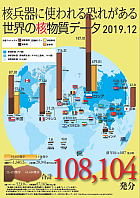 |
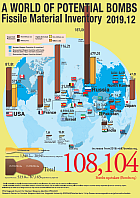 |
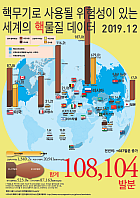 |
>> Previous editions can be downloaded from here.
>> Posters of “The World’s Nuclear Warheads Count” 2019.6 were released here.
A Guide to “The World’s Fissile Material Inventory” 2019.12

|
Guide to the World’s |

|
>> Previous editions can be downloaded from here.
>> A Guide to “The World’s Nuclear Warheads Count” 2019.6 was released here.
